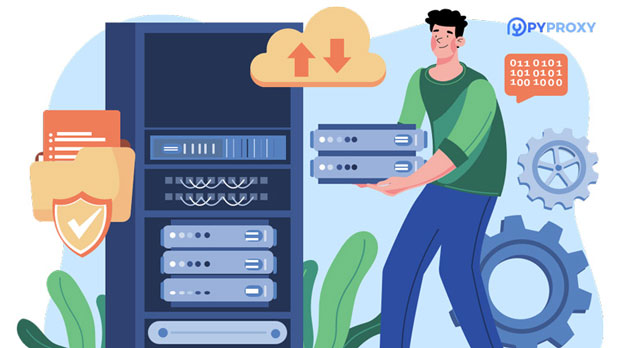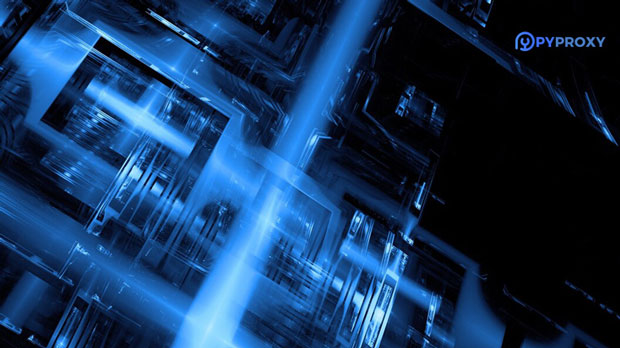Does using free online SOCKS5 proxy affect the internet speed?
In today's digital world, internet privacy and security are top concerns for many users. One common method for maintaining anonymity and bypassing geographical restrictions is the use of proxies, particularly socks5 proxies. However, a frequent question among users is whether using free online SOCKS5 proxies can affect internet speed. While SOCKS5 proxies provide a reliable solution for privacy, speed issues often arise when using free versions. This article will explore how free SOCKS5 proxies impact internet speed, shedding light on various factors that contribute to a decrease in performance. It will analyze how server quality, traffic load, and other considerations influence your browsing experience. Understanding SOCKS5 ProxiesBefore diving into the specifics of speed-related concerns, it's essential to understand what a socks5 proxy is and how it functions. SOCKS5 is a protocol that routes internet traffic through an intermediary server, masking the user's IP address and location. This layer of anonymity is achieved by handling all types of internet traffic, including HTTP, FTP, and P2P, making it highly versatile.Unlike other types of proxies, SOCKS5 offers support for additional security features like authentication, which means users can have greater control over who accesses their proxy server. However, despite these advantages, the use of free online SOCKS5 proxies is often associated with potential speed issues due to several factors.The Impact of Free SOCKS5 Proxies on Internet Speed 1. Server Load and Traffic CongestionOne of the primary reasons why free SOCKS5 proxies affect internet speed is the high traffic volume they handle. Since free proxies are publicly accessible, they are often used by a large number of people at the same time. This increased load on the server leads to congestion, causing slower speeds for users. Just like any shared resource, when multiple users are trying to access the same proxy server, bandwidth is divided among all users, leading to a noticeable decrease in performance.For instance, if many users are streaming videos, downloading large files, or engaging in high-bandwidth activities simultaneously, the server may become overloaded, significantly affecting the speed for each individual user. This is a common issue with free proxies, as they tend to have fewer resources allocated to handle traffic efficiently. 2. Server Location and Routing DistanceThe physical location of the proxy server also plays a crucial role in determining internet speed. Free SOCKS5 proxies are often located in distant regions or countries, which means that your internet traffic has to travel a longer distance to reach the proxy server. This additional routing can introduce latency, increasing the time it takes for your requests to be processed.For example, if you're located in the United States but are using a free socks5 proxy based in Europe or Asia, the increased travel distance for your data can cause significant delays. The longer the distance, the more time it takes for data to travel back and forth between your device and the proxy server, which inevitably leads to slower speeds. 3. Bandwidth Limitations of Free ProxiesAnother significant factor contributing to reduced speeds when using free SOCKS5 proxies is the limited bandwidth allocated to free users. Many free proxy services impose restrictions on the amount of bandwidth users can consume. When these limits are exceeded, users may experience throttled speeds or even complete loss of access to the proxy.Since free proxies are not typically designed with high bandwidth in mind, users often encounter slowdowns during peak usage times. This is particularly noticeable when trying to stream videos, download files, or engage in other data-heavy activities. Premium proxies, on the other hand, generally offer higher bandwidth capacity and better speeds, as they are designed to handle more intensive internet traffic.Additional Factors That Affect Speed 4. Encryption and Security OverheadsMany free SOCKS5 proxies come with minimal security features or no encryption at all. While this may make the proxy faster, it also exposes users to potential privacy risks. On the other hand, some free proxies offer encrypted connections, which, although enhancing security, can introduce additional overhead and affect speed. Encryption adds an extra layer of processing to each data packet, slowing down the transmission speed.This trade-off between security and speed is crucial. Users who prioritize security might experience slower speeds due to encryption, while those who do not require a high level of security might opt for less secure connections with faster speeds. However, it's important to note that even in cases where encryption is not enabled, free proxies may still not offer optimal speeds due to other factors discussed. 5. Quality of the Proxy ServerNot all free SOCKS5 proxies are created equal. The quality of the server can vary significantly between different services. Some free proxy providers may offer servers with high uptime, low latency, and fast speeds, while others may operate poorly maintained servers that are prone to downtime, lag, and instability.In addition, the hardware and software configurations of the proxy server can also impact performance. Servers with outdated hardware or insufficient processing power may struggle to handle high volumes of traffic, further affecting the internet speed experienced by users. 6. Reliability and Stability of Free ProxiesThe reliability of free proxies can also impact internet speed. Since free proxies are often less stable than paid options, users may experience intermittent connections, frequent disconnections, or inconsistent speeds. These issues can severely degrade the browsing experience, making it frustrating to use the internet for even basic tasks.The instability of free proxies is often caused by inadequate maintenance and lack of support. Many free proxy services do not prioritize uptime, and as a result, their servers may go offline frequently or perform poorly during periods of high demand.Is It Worth Using Free SOCKS5 Proxies for Speed?While free SOCKS5 proxies may offer a temporary solution for users seeking privacy or to bypass geo-restrictions, they often come with significant trade-offs when it comes to internet speed. The combination of server load, location, bandwidth limitations, and other factors means that users are likely to experience slower internet speeds when using these free services.For users who need high-speed, uninterrupted browsing, using a paid SOCKS5 proxy may be a better option. Paid proxies typically offer better performance, more stable connections, and higher security. They also provide access to a more extensive network of servers, which can be critical for avoiding congestion and improving speed.However, for casual browsing or occasional use, free SOCKS5 proxies might still suffice, as long as users are aware of the potential speed drawbacks.ConclusionIn summary, free online SOCKS5 proxies can have a significant impact on internet speed due to various factors such as server load, location, bandwidth limitations, and encryption overheads. While they offer valuable privacy benefits, the performance drawbacks make them less ideal for activities that require consistent and fast internet speeds, such as streaming or gaming. Users seeking optimal performance may consider exploring premium proxy services that offer faster speeds, higher reliability, and better security.
2025-01-07

























































